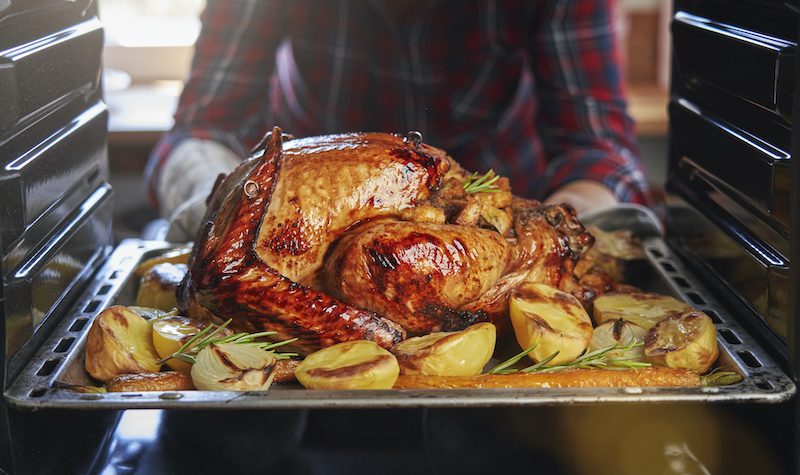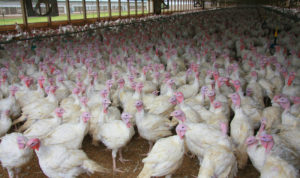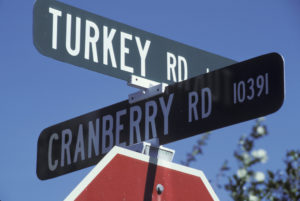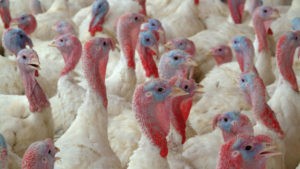
State and federal agencies urge families to celebrate Thanksgiving safely amid COVID-19.
For many Americans, Thanksgiving weekend is a time filled with large family gatherings, joyful parties, and moments to reconnect with old friends and distant relatives. But this year, this cherished holiday in the United States will look different amid the ongoing coronavirus pandemic.
As COVID-19 cases rise in nearly every state, hospitals remain overwhelmed with patients, and many Americans continue their battle against the virus, federal and state governments have issued new guidance to help Americans celebrate Thanksgiving safely.
The safest way to spend Thanksgiving is by staying home with those in your household and celebrating virtually with others, according to the Centers for Disease Control and Prevention (CDC). With 1 million U.S. cases reported over the past week, the CDC warns that attending dinners or gatherings with individuals outside of one’s own household increases the chance of disease spread and transmission.
Despite these calls from public health experts at the CDC to stay home this Thanksgiving, nearly 50 million Americans are expected to travel for the holiday. Although the number of travelers making their journey by air is anticipated to fall by nearly 50 percent compared to last year, the number of guests making their way to a Thanksgiving celebration by car is expected to fall by only four points.
In its guidance, the CDC advises against travel by individuals in high-risk populations, such as people with cancer, who may become extremely ill if they contract the virus. The CDC also urges prospective travelers to consider the number of cases in their communities and destinations, whether hospitals in these areas are flooded with COVID-19 patients, and if state and local authorities have put in place any travel restrictions.
For Americans who still decide to travel over the holiday, the CDC emphasizes several ways to reduce risk of COVID-19 exposure, including wearing a mask in public places, maintaining six feet of social distance whenever possible, and practicing good hand hygiene, among other strategies.
No matter how far they may travel, Americans should also follow these same measures whenever attending gatherings with others outside of their immediate household. In addition to wearing a mask when not eating or drinking, the agency also recommends that guests bring their own food, plates, and cutlery, refrain from entering areas where food is prepared, and use disposable items such as single-use condiments.
For hosts, the CDC suggests having an outdoor meal—or, if weather prohibits outdoor dining, an indoor meal with fresh air circulation. Gatherings should also remain small and, ideally, among people who live in the same community. Hosts should regularly disinfect high-touch surfaces and items.
Throughout the country, state agencies have also issued similar guidance about gatherings.
Earlier this month, California’s Department of Public Health issued guidance that applies to any gathering, which the Department defined as “social situations that bring together people from different households at the same time in a single space or place.” Noting that the risk of COVID-19 transmission is higher at gatherings, the Department issued both recommendations and requirements for gatherings. For example, the Department recommends capping gatherings at two hours and it prohibits gatherings of four or more households. The two-hour guideline may fall squarely in line with a popular lifestyle blog’s recommendations for the length of the Thanksgiving meal. But those who treat Thanksgiving as “a day of feasting” may find this recommendation harder to follow.
Meanwhile, on the East Coast, the Connecticut Department of Public Health issued guidance on holiday gatherings tailored to both guests and hosts. According to the guidance, guests should avoid traveling long distances and bring personal protective equipment such as masks and tissues. Hosts should reduce the size of their guest lists as much as possible, and, in line with CDC guidance, they should use disposable items such as single-use plates and prioritize the use of outdoor spaces for the meal and other activities. Although Thanksgiving in Connecticut is expected to be warm, rain across the East Coast could thwart plans for outdoor meals, increasing the chance of disease spread.
After months of quarantining and social distancing, many Americans long for connection. Still, public health officials call on everyone in the United States to “hang in there and adhere to these public health measures” to ensure a safe holiday.
For our readers who celebrate Thanksgiving, we wish you a happy, and safe and healthy, holiday—no matter how or where you choose to spend it.



